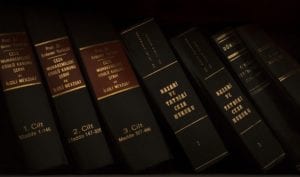 Claims for injuries often involve situations where the tortfeasor (person who causes the injury) is singularly at fault and is responsible for the full extent of the injured parson’s damages. However, situations also arise when multiple persons, including the injured party, are at fault. Does an injured person have a claim if he or she is partially at fault for his or her own injuries? This blog post examines the doctrine of comparative negligence as used in Arizona and provides an example.
Claims for injuries often involve situations where the tortfeasor (person who causes the injury) is singularly at fault and is responsible for the full extent of the injured parson’s damages. However, situations also arise when multiple persons, including the injured party, are at fault. Does an injured person have a claim if he or she is partially at fault for his or her own injuries? This blog post examines the doctrine of comparative negligence as used in Arizona and provides an example.
Under traditional common law, tortfeasors could use the defense of “contributory negligence” to fully avoid liability. Put another way, if an injured party was partially at fault, the tortfeasor would not have to pay for their damages. However, this doctrine led to hard results. For example, if a jury found an injured person was 10% at fault and the tortfeasor was 90% at fault, the injured person would receive nothing.
The Exchange of Contributory Negligence To a Less Harsh Doctrine
 Luckily, Arizona has abandoned the doctrine of contributory negligence in exchange for the less harsh doctrine of comparative negligence. (Cox v. May Dept. Store Co. (1995) 183 Ariz. 361.) Comparative fault principles apply when one or more parties combine to cause the injury. (Natseway v. City of Tempe (1995) 184 Ariz. 374)
Luckily, Arizona has abandoned the doctrine of contributory negligence in exchange for the less harsh doctrine of comparative negligence. (Cox v. May Dept. Store Co. (1995) 183 Ariz. 361.) Comparative fault principles apply when one or more parties combine to cause the injury. (Natseway v. City of Tempe (1995) 184 Ariz. 374)
Specifically, Arizona codified the comparative negligence rules with A.R.S. 12-2505. Pursuant to this statute, damages shall be reduced in proportion to the relative degree of the claimant’s fault which is the proximate cause of the injury or death. (A.R.S. 12-2505.) However, there is a caveat. If the injured person acted intentionally, willfully, or wantonly, the injured person will not be able to obtain any damages. (Id.)
- For example, imagine an intersection with a speed limit of 35 miles per hour in all directions. A driver (“Turning Driver”) approaches the red light, stops, looks both ways, and makes a right turn on red. As soon as the Turning Driver turns, he is struck by a driver (“Speeding Driver”) traveling with the green light but traveling 100 miles per hour.
On the one hand, the Turning Driver was required to yield to the Speeding Driver. However, the Speeding Driver was traveling 65 miles above the speed limit. If the Turning Driver is seriously injured and brings a lawsuit against the Speeding Driver, will the Turning Driver be able to collect for his or her injuries?
Negligence Rules
 This is a situation where comparative negligence rules will likely apply. The Turning Driver may file a claim and seek damages for injuries. However, it is likely the Speeding Driver will raise the comparative negligence defense and assert the Turning Driver is at least partially responsible for his or her own injuries. If the Speeding Driver raises the defense of comparative negligence it will ultimately be the jury’s job to apportion fault.
This is a situation where comparative negligence rules will likely apply. The Turning Driver may file a claim and seek damages for injuries. However, it is likely the Speeding Driver will raise the comparative negligence defense and assert the Turning Driver is at least partially responsible for his or her own injuries. If the Speeding Driver raises the defense of comparative negligence it will ultimately be the jury’s job to apportion fault.
Let’s take the example of a set further. Imagine the jury finds the Turning Driver is damaged in the amount of $100,000 but finds the Turning Driver 50% at fault. The damages will be reduced in proportion to the plaintiff’s fault. (Shelby v. Action Scaffolding, Inc. (1992) 171 Ariz. 1.) Here, the Turning Driver is entitled to $50,000 in damages under the doctrine of comparative negligence.
The Attorneys at Karnas Law
 The attorneys at Karnas Law have years of experience representing injured persons. Even if you believe you may be at fault for a portion of the injury, you may still have a claim against the tortfeasor. If you have been injured by another, contact Karnas Law for your free consultation today.
The attorneys at Karnas Law have years of experience representing injured persons. Even if you believe you may be at fault for a portion of the injury, you may still have a claim against the tortfeasor. If you have been injured by another, contact Karnas Law for your free consultation today.
- CALL NOW: (520) 462-3886
